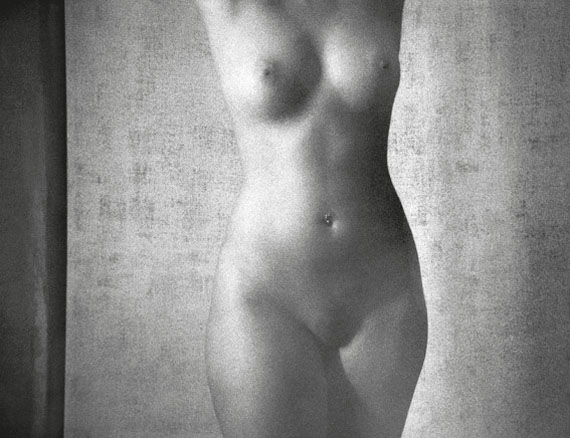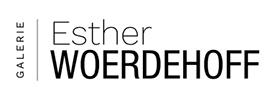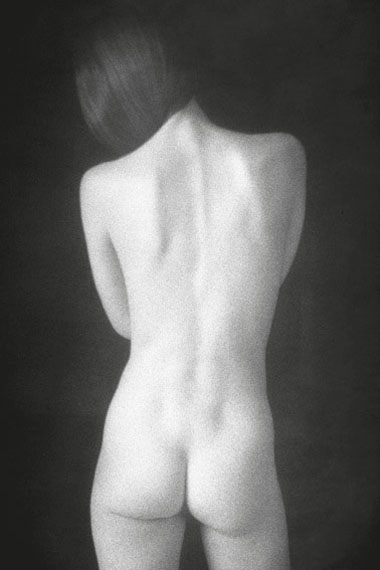
Gelatin silver print, 30 x 40 cm, edition of 7
René Groebli »
Nudes
Exhibition: 1 Sep – 8 Oct 2016

Galerie Esther Woerdehoff
36 rue Falguière
75015 Paris
+33(0)9-51 51 24 50
galerie@ewgalerie.com
www.ewgalerie.com
Wed-Sat 12-19

Gelatin silver print, 40 x 50 cm, edition of 7
René Groebli
"Nudes"
Exhibition: 1 September – 8 October 2016
Opening reception: Thursday, 15 September, 6–9pm
The artist will be present.
In fall 2015, the gallery presented the series "The Eye of Love" and "The Magic of the Rail" by René Groebli (born in 1927). It was the first exhibition in France of this great Swiss photographer whose career runs through the entire second half of the twentieth century. His personal work thus follows with curiosity and versatility the history of photography.
Nudes, issued this year by the Swiss publisher Sturm & Drang, reveals a magni cent study of the female body. Groebli has challenged the technical possibilities of the medium and explores overprint, distorting or using the grain of the silver film, in order to bring a timeless atmosphere around his models’ figures. Beyond a simple representation of nudity, the photographer capture lines and forms, light and shadows in compositions where the fascination for sensuality comes with an extended aesthetic research.

Gelatin silver print, 50 x 40 cm, edition of 7
René Groebli was born in 1927 in Zurich. He took his first pictures with a Rollei ex in 1942 and began to learn photography the following year. In 1945, he studied at the School of Arts and Crafts in Zurich with Hans Finsler then worked as a film operator and began experimenting movement photography. In 1949, he published his first book "Magie der Schiene" (Rail Magic), with a radical aesthetic with creative use of blur and grain in the image. In 1954, "Das Auge der Liebe" (The Eye of Love), includes photographs of his wife taken during their honeymoon and offers a poetic vision of erotic photography.
In the 1950s, he worked as a photo-reporter for the London agency Black Star and published his pictures in major magazines of that time. He then openned an advertising and industrial photography studio where he worked until his retirement. Recognized as a master of color, he practiced all genres and followed the stylistic and technical evolution of photography over five decades in an approach where cutting edge pictures follow a classic aesthetic. In 1981, the photographer sold his fund and settled in Provence, where he rediscovered the possibilities of black and white in his personal work. He continued to exhibit and publish his work and in 1999 the Zurich Kunsthaus dedicated him a major retrospective exhibition.